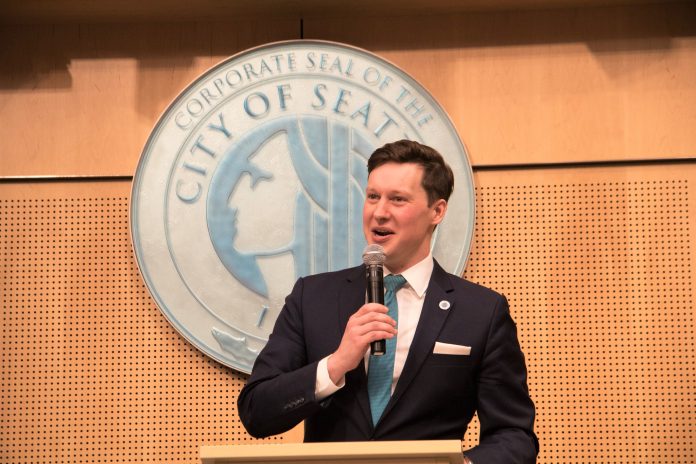
The Seattle Redistricting Commission approved its final map for Seattle City Council districts on Tuesday, making no further changes from the map we covered last week. All seven council districts saw tweaks, but CD6 and CD7 received some of the most dramatic and most debated changes.
In the next decade of council elections, most of Magnolia is parting ways with downtown CD7 and becoming part of Ballard’s CD6. The commission split Magnolia along the ridge with coast-facing side to the west in D6, and Queen Anne facing homes to the east in D7. This proved controversial, but ultimately has a logic, since the more apartment-heavy area in eastern Magnolia arguably shares more in common with Interbay than the view homes high above Elliott Bay.
Relatedly, Crown Hill and North Greenwood are leaving D6 and joining North Seattle’s D5. Pioneer Square is leaving D7 and joining West Seattle’s D1. A chunk of South Lake Union that had been with U District in D3 is joining D7, uniting the neighborhoods south of the Montlake Cut.
That set of changes should make the voting patterns of D6 more conservative, while D7 will become progressive, based on past results. Magnolia (especially in the view home areas) has been a bastion for more conservative candidates, while Crown Hill and Greenwood have been relatively friendly to progressives. The shift should buoy D7 Councilmember Andrew Lewis’s reelection odds, but it will create headwinds for D6 Councilmember Dan Strauss. Both came in during the progressive wave of 2019, which was pivotal in passing the JumpStart corporate payroll tax that saved the city’s finances amidst the pandemic and quickly become a top source of revenue for affordable housing investments.
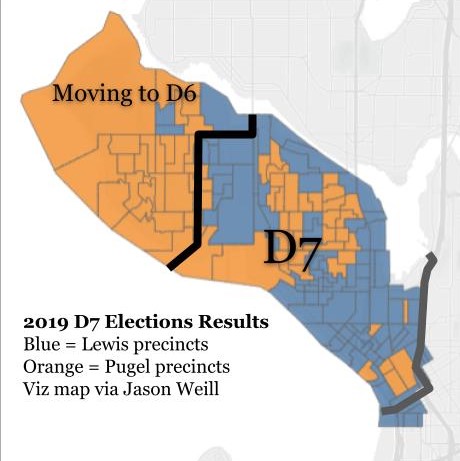
It will be interesting to see if Strauss tacks to the expected centrist drift of the district — to some extent he already has. But, as land use chair, Strauss is also in position to an incredible amount of good for residents struggling with their housing costs. Adding more zoning for apartments and missing middle housing could help alleviate Seattle’s long roiling housing crisis, and he expressed interest in doing so back in his 2019 campaign. Strauss is in position to be a catalyst (or a bottleneck) for zoning reform as the 2024 Comprehensive Plan update presents a major window of opportunity.
Progressive opportunity in D5
D5 could become a bit more friendly to progressive candidates by gaining Crown Hill and North Greenwood and losing Wedgwood, which has mostly favored more conservative candidates. Wedgwood is getting fully united in D4, with the northern chunk leaving D5.
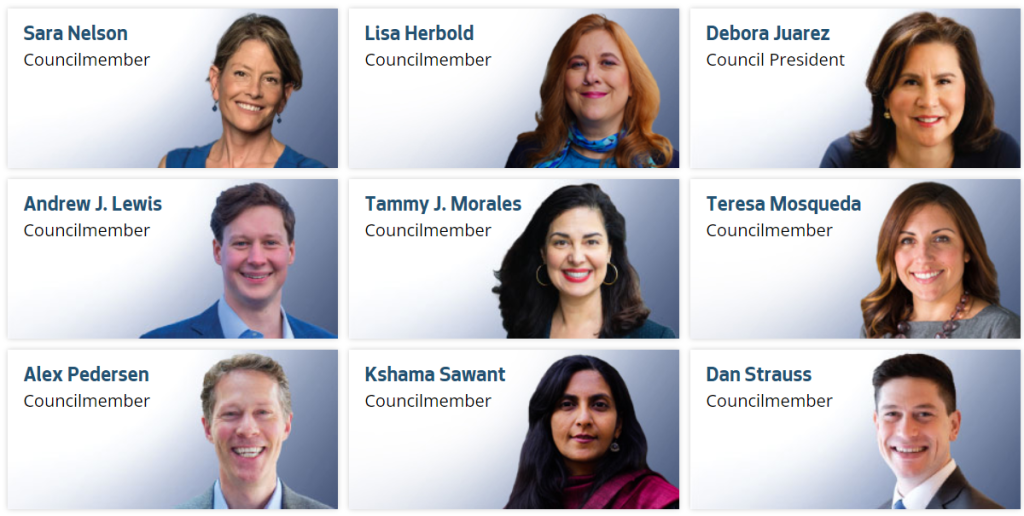
Council President Debora Juarez, who represents D5, told the Puget Sound Business Journal that she does not plan to seek a third term, but perhaps the prospect of keeping her council presidency and working with her ally in Mayor Bruce Harrell will cause her to change her mind. In 2019, Juarez won by a whopping 20 points over conservative challenger Ann Davison, who went on to become Seattle City Attorney in 2021 thanks to some establishment Democrat backing and a centrist wave year.
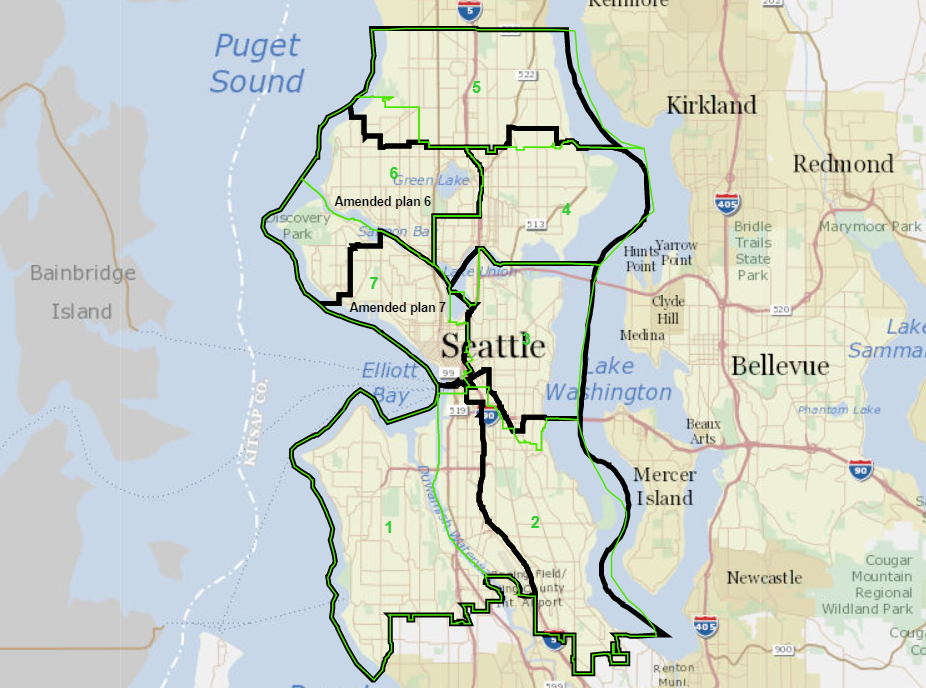
Help for Herbold in D1
Georgetown and SoDo, meanwhile, are leaving CD2 and joining CD1, which is also gaining Pioneer Square. Those additions should cause D1 voting patterns to tilt a bit more progressive. Nonetheless, Councilmember Lisa Herbold could have a tough reelection campaign. Opponents could seek to dump the issue of crime on her plate since she is public safety chair. Herbold advocated for diverting some funds from the Seattle Police Department to invest in community-based public safety alternatives, but has also opposed trimming SPD’s “ghost” position funding in 2021 and fully funded SPD’s hiring plan. The issue of policing and public safety could cut either way. Leesa Manion’s apparent decisive win over a tough-on-crime candidate (Federal Way Mayor Jim Farrell) in the King County Prosecutor race shows that overplaying that hand could backfire. Plus, Herbold did win by 12 points in 2019.
D3: Still progressive, but lefty enough for Sawant?
Eastlake is leaving D4 and joining D3. D3 is losing its portion of Chinatown-International District and Yesler Terrace, but gaining a few blocks of First Hill. This set of changes are a bit of a mixed bag, but could make D3 a tad less progressive on net. Mount Baker and Yesler Terrace largely supported the recall attempt against Councilmember Kshama Sawant for example, but the International District opposed it. Eastlake is a bit of mixed bag itself, with some progressive-leaning precincts in the denser interior, but waterfront precincts have supported centrists in recent elections.
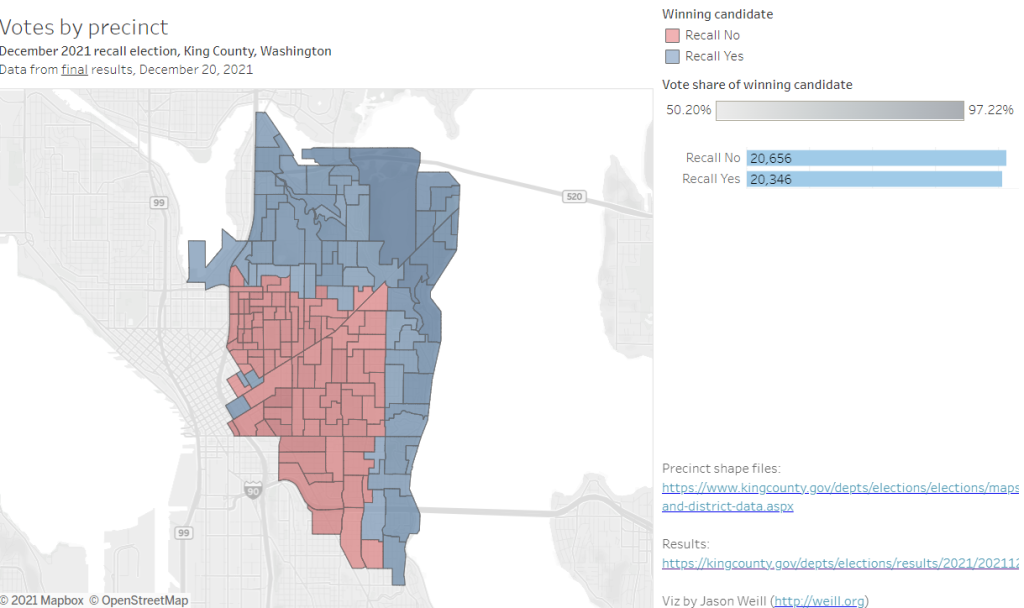
Sawant is likely to have a tough race on her hands, given how narrowly she avoided recall in 2021. It’s not certain she will seek another term, which would be her fourth. If she did step aside, it would seem to be a district that still solidly favors progressives — even if it has potentially soured on the socialist firebrand that has represented it since the district system was adopted in 2015. But of course, Sawant has defied the odds and high-spending campaigns against her before; so, it’s hard to rule her out.
Treading water in D4
To the north, D4 may get a bit more conservative with the addition of Wedgwood and loss of Eastlake. On the other hand, as I noted in August, “the torrid pace of apartment construction in the University District, Roosevelt, and in the Stone Way corridor could ultimately pull the district toward progressives as younger people move into the area. And progressives could look back at Alex Pedersen’s four-point win over socialist Shaun Scott and conservative voting record once on council and see an opportunity.” If apartment dwellers in D4 (new or otherwise) turn out in sufficient numbers, Pedersen will be in trouble. The catch is turnout in tenant-heavy precincts is often very low in odd-year elections.

Morales is a mighty incumbent in D2
To the south, Mount Baker, Chinatown-International District, and Yesler Terrace are joining D2, but Georgetown and SoDo are leaving it. It’s hard to say if it will be more progressive than it already was, but D2 certainly appears likely to remain very progressive and likely to reelect Councilmember Tammy Morales, who grabbed 60% of the vote in 2019.
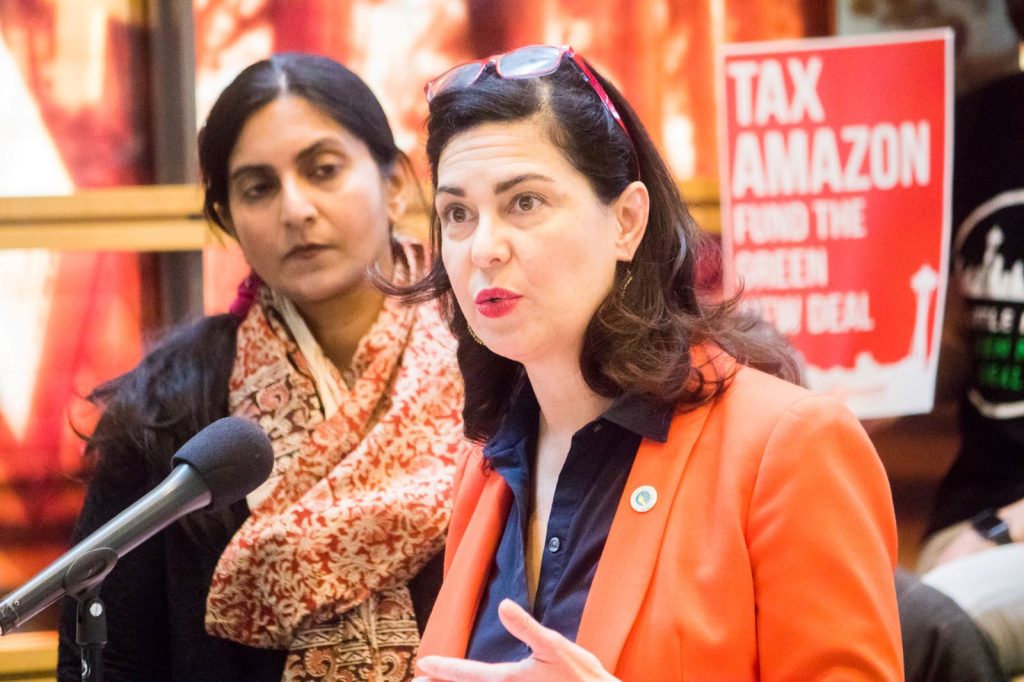
A look back on the redistricting process
All in all, it’s a fair map that rectifies a number of former issues like splitting of a number of communities of color, such as Yesler Terrace and Chinatown-International District. This positive result is largely a credit to Redistricting Justice Seattle, a grassroots coalition formed to promote racial equity and do right by historically marginalized communities in the redistricting process. The final map, despite some tweaks and attempted overhauls, largely follows the framework and map proposal put forth by the coalition.
Faced with a proposal to game that map by adding a further split in Fremont to unite all of Magnolia and Interbay in D6, Commissioner E.J. Juárez noted the bulk of public feedback throughout the process favored the Redistricting Justice Seattle map. “I think it would be a shame for us to throw out the months of activism, the month of engagement from those folks, who had a very concrete map that is incongruous with the lines proposed here,” Juárez said.
Ultimately, that argument — and the outpouring of public support undergirding it — ruled the day, even as Commissioner Nickels tried repeatedly to remake the map in a less equitable way.
Publicola‘s Erica Barnett noted that Nickels even appeared to embrace White grievance politics as he accused those who supported the map of being out for “retribution” against Magnolia.
“Retribution [against] Magnolia because it is an older, wealthier and whiter community—I think that’s not something that the redistricting commission ought to be engaged in,” Nickels said. “I don’t think that individual commissioners are engaging in that, but I want to make it clear that I think that that’s just an inappropriate social policy for redistricting to take on. And in a larger sense, as we talk about race and social justice, I think that reconciliation is going to be a much more successful strategy than retribution.”
Since the proposals to unite the entire peninsula of Magnolia in one council district involved splitting up other neighborhoods, like Fremont or the University District, it’s hard to see how Nickels’ strategy wouldn’t have also been “retribution” just directed at other quarters.
Use the slider below to compare the old council district map to the new one.


How we got here
The redistricting commission is required to balance out each district’s population so they are even. Since the parameters are determined by the 2020 census, which pegged Seattle’s population at 737,015, each district must have roughly 105,300 residents. Those census figures shows that District 7 was extremely overpopulated based on a decade of very strong growth, while Districts 1, 2, 5, and 6 were underpopulated after growing slower than the city average. The census determined District 3 was fairly overpopulated, and District 4 was slightly overpopulated.
| Council District | 2010 Census | 2019 Estimate | 2020 Census | Growth rate | Difference from mean | 2019 Difference from mean |
|---|---|---|---|---|---|---|
| 1 | 86,785 | 99,700 | 99,698 | 14.88% | -5,590 | -7,029 |
| 2 | 87,268 | 101,900 | 99,163 | 13.63% | -6,125 | -4,829 |
| 3 | 86,558 | 113,200 | 106,845 | 23.44% | 1,557 | 6,471 |
| 4 | 87,677 | 109,000 | 106,103 | 21.02% | 815 | 2,271 |
| 5 | 86,950 | 98,300 | 99,102 | 13.98% | -6,186 | -8,429 |
| 6 | 86,771 | 101,100 | 102,753 | 18.42% | -2,535 | -5,629 |
| 7 | 86,651 | 123,900 | 123,351 | 42.35% | 18,063 | 17,171 |
| Total | 608,660 | 747,100 | 737,015 | 21.09% | 105,288 | 106,729 |
In Seattle’s case, the mayor gets to appoint two commissioners and the council, by a two-thirds vote, gets to elect two commissioners. Those four commissioners then vote to add one more commissioner that completes the five-member Seattle Redistricting Commission.
Back in 2021, Mayor Durkan selected former Mayor Greg Nickels and philanthropy professional Neelima Shah as her picks. The city council selected Juárez, who is director of equity and environmental justice at the Washington DNR, and Rory O’Sullivan, who is a lawyer and FairVote Washington board chair. The commission then appointed Patience Malaba, who is executive director of the Housing Development Consortium, as their fifth member and chair.
The commission hosted meetings through the summer and fall gathering input from the public and allowing folks to propose their own maps. The vigorous debate and defenses showed the influence of those maps as the commission balanced out district populations while respecting natural boundaries and sought to keep the most neighborhoods united within districts.
After much debate, we’ve arrived at the final maps. Now the jockeying and maneuvering for the 2023 council elections can begin in earnest.
Doug Trumm is publisher of The Urbanist. An Urbanist writer since 2015, he dreams of pedestrian streets, bus lanes, and a mass-timber building spree to end our housing crisis. He graduated from the Evans School of Public Policy and Governance at the University of Washington in 2019. He lives in Seattle's Fremont neighborhood and loves to explore the city by foot and by bike.


